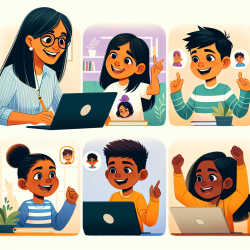In the rapidly evolving field of speech-language pathology, leveraging data-driven insights to improve therapeutic outcomes is crucial. A recent study titled A Preliminary Study on Realizing Human–Robot Mental Comforting Dialogue via Sharing Experience Emotionally offers valuable findings that can be integrated into our practices to enhance empathy and emotional support in therapy sessions.
Key Findings from the Research
The study explores how an android robot, ERICA, can provide emotional support by sharing experiences and adjusting its vocal tone to match the user's emotional state. Here are the significant findings:
- Emotional Voice Conversion: The researchers used a CycleGAN-based model to convert ERICA's neutral voice into emotional tones (low-spirit and positive), enhancing the perception of empathy.
- Scenario-Based Comforting: ERICA engaged in dialogues with users, sharing similar predicaments and adopting a low-spirit voice to express empathy, followed by a positive voice to provide encouragement.
- Evaluation of Effectiveness: Through questionnaire-based evaluations, the study found that ERICA's emotional expressions significantly improved users' perception of empathy and encouragement.
Implementing These Findings in Speech-Language Pathology
Practitioners can draw several actionable insights from this research to improve their therapeutic approaches:
- Use of Emotional Voice Modulation: Incorporate technology that can modulate vocal tones to express empathy more effectively. This can be particularly beneficial in teletherapy sessions where non-verbal cues are limited.
- Scenario-Based Dialogues: Develop scripts and scenarios that allow children to discuss their feelings and challenges. Use empathetic responses to validate their experiences and encourage them positively.
- Feedback and Evaluation: Implement regular feedback mechanisms, such as questionnaires, to assess the effectiveness of emotional expressions and adjust strategies accordingly.
Encouraging Further Research
While the study offers promising insights, it also highlights the need for further research to optimize the integration of emotional expressions in therapeutic settings. Areas for future exploration include:
- Multi-Modality Emotional Expression: Investigate the combined effects of vocal, facial, and gestural emotional expressions to enhance empathy in human-robot interactions.
- Gender-Specific Responses: Explore how different genders respond to emotional expressions and tailor strategies to meet diverse needs effectively.
- Real-Life Application: Conduct practical experiments in real-life therapeutic settings to validate and refine these strategies.
By incorporating these findings and encouraging further research, we can enhance our ability to provide empathetic and effective therapy to children, ultimately improving their communication skills and emotional well-being.
To read the original research paper, please follow this link: A Preliminary Study on Realizing Human–Robot Mental Comforting Dialogue via Sharing Experience Emotionally.










